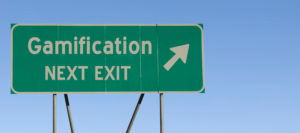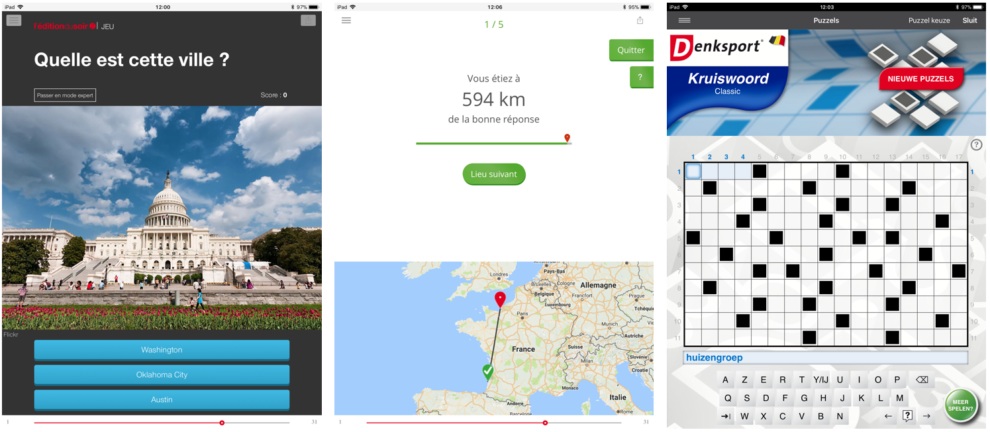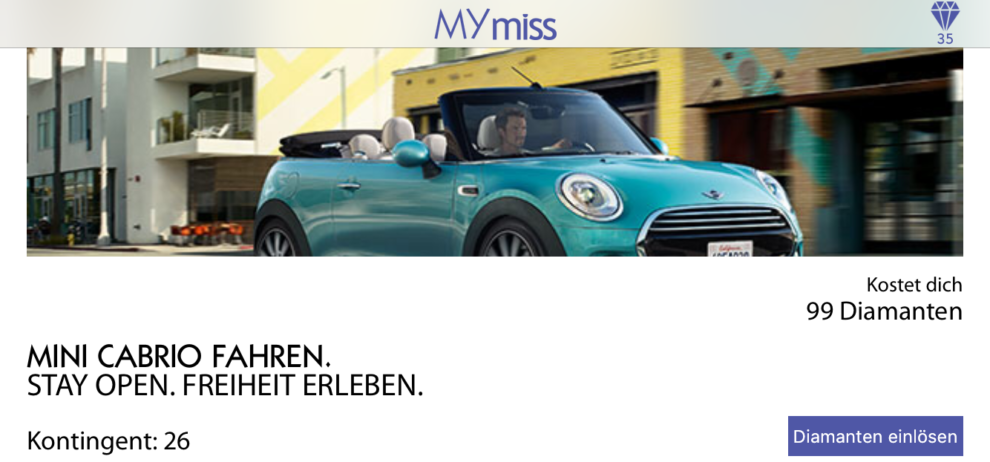
Last March, Norwegian newspaper NRK introduced a new feature to its commenting system, aimed at improving the quality and relevance of its comments section. The idea was simple: before submitting a comment, a reader would have to take a short quiz relating to the article’s content. By doing so, NRK hoped its readers would provide higher-quality comments, and hopefully calm down a little bit before writing them, thus reducing the number of “rant-comments”.
Six months into the experiment, NRK realised most readers taking the quiz had no intention to leave comments, and used it as a simple yet entertaining game to test their understanding of the article. It’s hard to complain when readers show you exactly what they want!
This brings us to a larger question – can games help newspapers in their quest for active users? Let’s have a look at a couple of examples
#1: Games as an addition to newspapers: l’Édition du Soir and Het Nieuwblad
These two newspapers chose to add interactive games to their mobile-optimised e-papers. In the case of Ouest-France’s l’Édition du Soir, we’re talking about themed quizzes pertaining to every edition’s content, as well as “spot the difference” games and general knowledge tests. They have been a major factor in allowing the digital-only evening newspapers to find its place in a crowded market, within a short amount of time.
Understanding the product and what its readers expected was key to finding the right way to integrate the games: the edition’s readers are mostly younger active people, who enjoy how the games were both fun for them to do, as well accessible enough that their young children could also play them.

Our second case here is little more conventional: Het Nieuwsblad is a print newspaper with a strong e-paper presence, who sought to replicate the experience provided by print’s crosswords or sudoku games, which are often left behind in digital publications. By adding such functionalities to its editions, Nieuwsblad increased its average reading time by a rather staggering 75 seconds. But it’s not only about time spent: as any newspaper enthusiast will know, such games are a key driver of habit creation, and habits help monetisation.
#2: Gamifying the news
Austrian women’s magazine “Miss” chose to take things even further. Rather than adding games to newspapers, no matter the degree of integration, they chose to make reading news a game in itself.
The concept is simple: as the users consume news, they collect “diamonds” through varied interactions with the apps. Open an article, and you’ll get a diamond. The same applies for sharing an article. Open the app on a daily basis, and you’ll get more diamonds. Get a paying subscription (we all knew it’s where this was headed!), and you’ll receive much more. The diamonds can then be traded against various items, ranging from make-up to a test-drive of the latest convertible Mini.

With this new idea, Miss was able to hit a lot of birds with a single stone. Let’s see which ones:
- Rewarding users for their time, attention and frequency…
- … which in turn, creates a consultation habit
- Selling diamond exchange options as high-value, high-price ad-space for companies
- Improving the value proposition of subscription by offsetting its monetary cost with “free” diamonds
The future of news?
These are just a few examples of how games can make news more attractive for readers. While they will in no way replace the need for high-standard reporting, great writing and a promise of journalistic neutrality, games will earn newspapers a durable share of its user’s daily time. And isn’t that type of engagement what makes people subscribe? .
